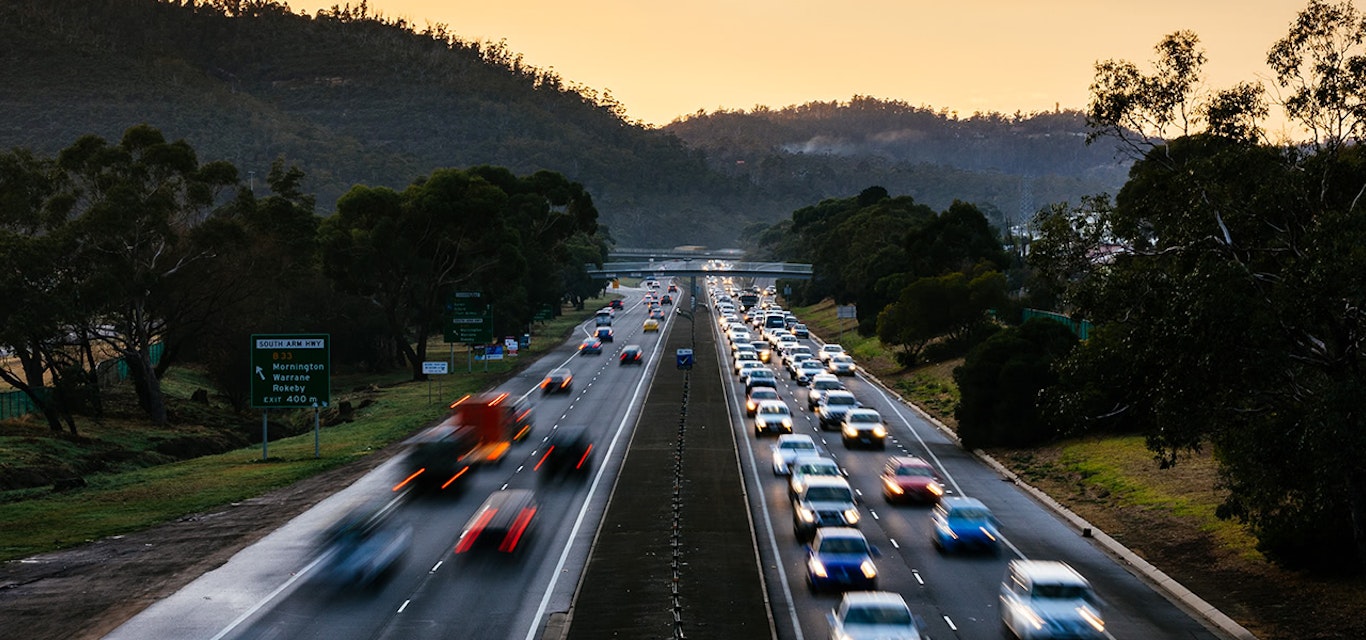Technology's answer to our driving behaviour
Most of us frown on those who speed or use their mobile phones while driving. But there is technology used in Australia today to detect this behaviour, all paid for by those breaking the law.
Advanced mobile phone and speed detection cameras are already in place in New South Wales, where they have been immensely successful. The same technologies will be in place in South Australia, Queensland and Victoria from later this year or early 2022, and we believe it's time for these devices to be introduced in Tasmania.
These cameras catch people on their phones, speeding or not wearing seat belts by shooting down through the windscreen from overpasses, road sign gantries and from mobile trailers using extendable poles.
During a six-month trial of mobile phone detection cameras in NSW, 100,000 motorists were detected using their phone while driving. The NSW Government later conducted three community surveys and found support for the camera initiative was at 80%.
Independent modelling by Monash University Accident Research Centre (MUARC) also estimates that the program will contribute to a reduction in road trauma of approx. 100 fatal and serious injury crashes in NSW over a five-year period.
In May 2019, a mobile phone and speed detection device was trialled on the Brooker Highway in Hobart. In 36 hours, it detected around 450 people illegally using their phones and over 170 travelling more than 7km/h above the speed limit. This was just from one lane.
This kind of data is why we want to see such technologies introduced on Tasmanian roads.
However, the challenge is how the rollout of this technology can be funded. This is why we want to see the revenue from an expanded camera network used to roll out, operate and maintain this critically important road safety measure.
Such an approach will see those breaking the law pay for the technology, helping reduce these types of crashes.
In 2020-21, traffic policing was expected to reap $21.5 million in fine revenue. However, Tasmania is the only state that does not reinvest this revenue into road safety initiatives, instead channeling it into government revenue. In all other states, hundreds of millions of dollars from enforcement revenue is returned to road safety programs, including the NSW mobile phone and speed camera network.
We want to see this revenue model implemented to fund these cameras, in addition to the Tasmanian Road Safety Levy, which is paid out of our vehicle registration and goes towards infrastructure to make our roads safer (75%) and education programs to ensure we all drive safely and within the law (25%).
Credit: Publicly released image from Transport for NSW/Acusensus
It’s time to make this change because, let’s face it, we’ve all been guilty of speeding or using our phones while driving. Now, we need to be held accountable.
Tasmania Police enforce speeding through 10 fixed cameras across the state, alongside hand-held and vehicle-mounted speed cameras.
However, one look at our figures (see below) will tell you about the attitude of many Tasmanian drivers towards mobile phone use and speeding, and why more advanced enforcement technology is needed.
And if you think enforcement is all about revenue raising, think again. Tasmania Police issue far more warnings than fines every year, which is why we must also shy away from politicising road safety due to concerns about ‘revenue raising’.
At the end of the day, if you’re breaking the law, you’re breaking the law.
Reducing road trauma through this new technology is not a revenue raising exercise. It is deterrence and education through enforcement, which is a step that must be taken to help keep us all safe on the roads.
Distraction by numbers
Each year, distraction and speed contribute to 53% of fatal and serious injury crashes on our roads*
In 2019-20, almost 37,000 people were fined for speeding by Tasmania Police^. Of these, around 9300 were detected exceeding the speed limit by 15-29km/h, while about 1100 were caught travelling 30km/h or more over the limit#
In 2019-20, close to 2100 drivers were also nabbed for using their mobile phone while driving^
Research has shown that a driver’s reaction time while using a mobile phone is equivalent to driving with a blood-alcohol level of between .07 and .10**
If you’re driving at 60 km/h you will travel 33 metres for every two seconds you take your eyes off the road to check your phone. At 100 km/h it’s 55 metres^^
Research shows that with each 5km/h increase in speeds above 60km/h, the risk of a collision resulting in death doubles##
*The Department of State Growth’s Towards Zero Action Plan 2020-2024
^Tasmania Police 2019-20 Annual Report
#Tasmania Police Corporate Performance Reporting 2019-20
**Street Smarts, Queensland Government 2021
^^Road Safety Commission 2020
## Transport Accident Commission 2021
